
The China Insurance Consumer Confidence Index (CICCI) in Q4 2023 was 65.3, representing a decrease of 1.6 from Q3 2023 and a decrease of 2.7 over Q4 2022 and staying within the high confidence range ((65,85]). CICCI stayed within the high confidence range for all quarters in 2023, but grew slower quarter by quarter.
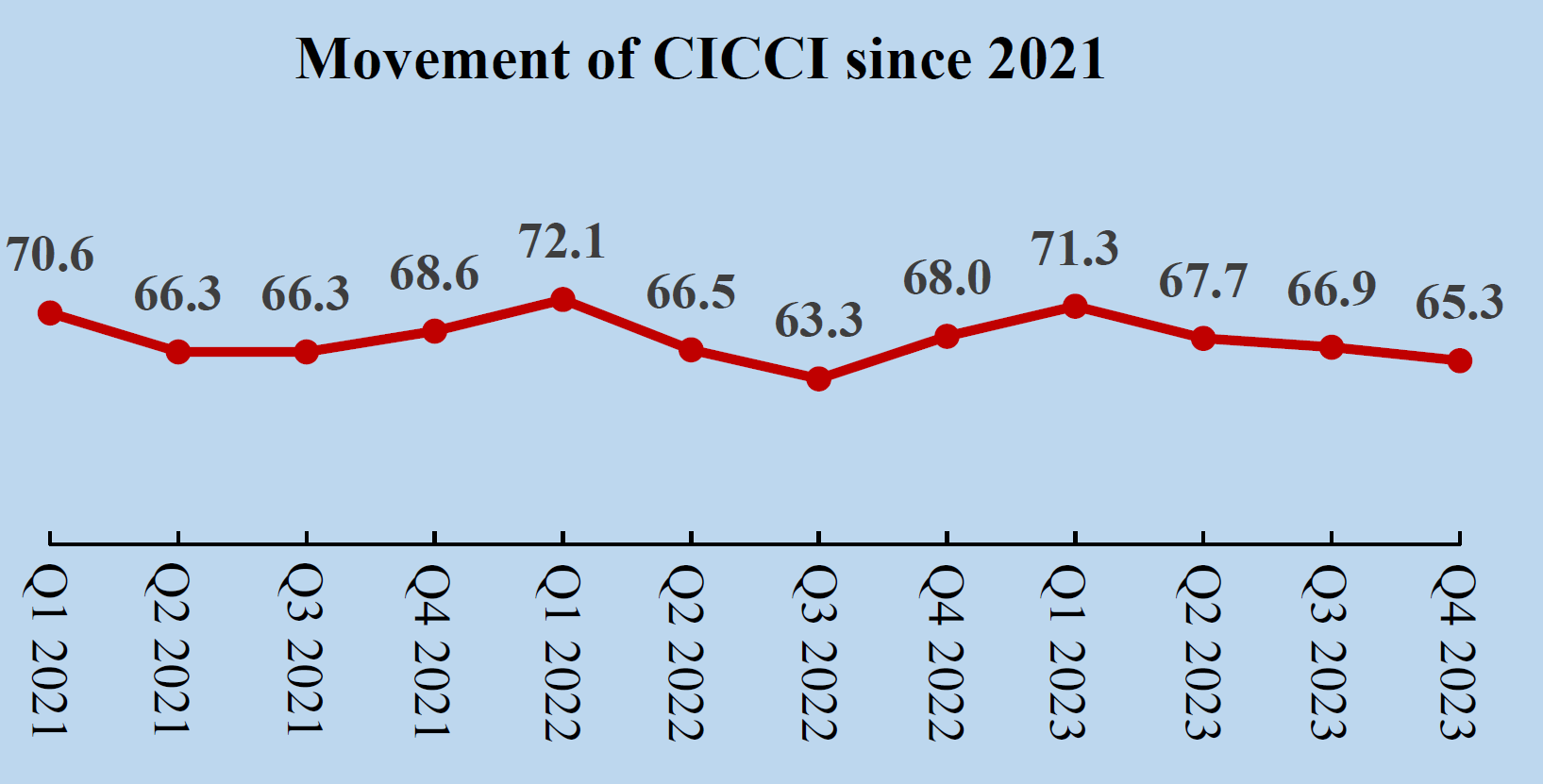
Figure 1 Movement of CICCI since 2021
In terms of insurance types, the life insurance consumer confidence index and the property insurance consumer confidence index in Q4 2023 were 65.8, a level within the high confidence range, and 64.9, a level within the average confidence range, respectively.
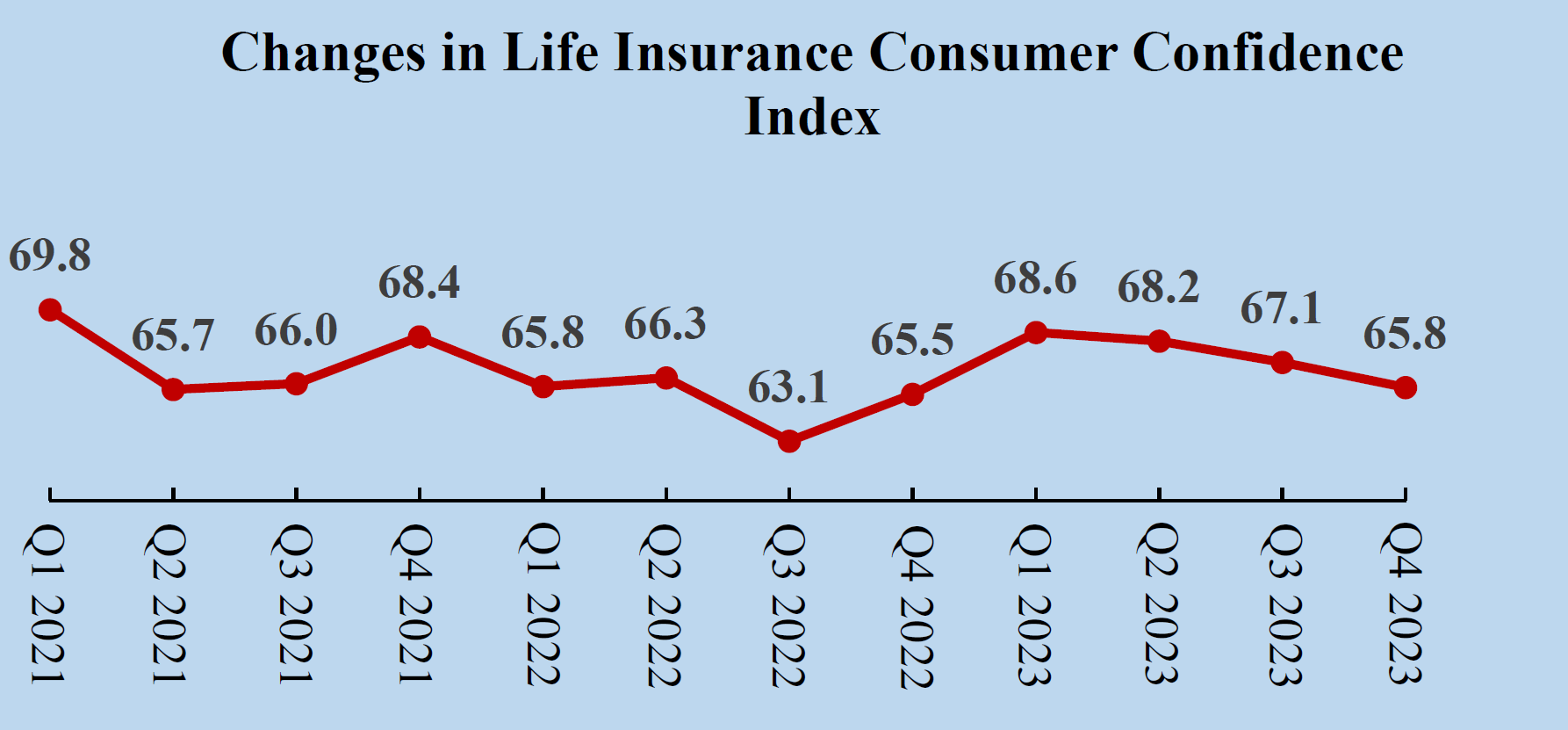
Figure 2 Changes in Life Insurance Consumer Confidence Index
In Q4 2023, the life insurance consumer confidence index was 65.8, down 1.3 over Q3 2023 and up 0.3 from Q4 2022, staying within the high confidence range. Its indicators showed the following trends: the three primary indicators and the six secondary indicators, which make up the index, all declined on a quarter-over-quarter basis. Of the three primary indicators, confidence in individual spending dropped greatly compared with the previous quarter, confidence in insurance industry stayed within the high confidence range, and confidence in macro-environment and confidence in individual spending both fell into the average confidence range. Of the six secondary indicators, consumer trust willingness decreased considerably, confidence in industry development, perceived industry policies, insurance service satisfaction, and consumer trust willingness stayed within the high confidence range, and confidence in economic environment and insurance spending willingness fell into the average confidence range.
The life insurance consumer confidence index in Q4 2023 was still higher than that in the same period of the previous year, despite a quarter-on-quarter drop. Three secondary indicators, that is, confidence in economic environment, confidence in industry development, and perceived industry policies, outperformed those of the same period in 2022. Confidence in industry development, perceived industry policies, insurance service satisfaction, and consumer trust willingness have stayed within the high confidence range for five consecutive quarters, indicating that consumer confidence in life insurance is still recovering and that consumers continue to rebuild their confidence in the macroeconomic and industry environment. As insurance spending willingness remains solid, willingness to purchase additional insurance has rebounded for three consecutive quarters, exceeding the levels in the same period of 2021 and 2022. A Q4 survey showed that 64.2% of life insurance consumers surveyed were willing to purchase additional insurance in the next six months. To be specific, 27.3% of the respondents were willing to purchase additional annuity insurance (up 5.6 percentage points quarter on quarter), 24.3% were willing to purchase additional universal insurance (up 3.5 percentage points quarter on quarter), and 23.2% were willing to purchase additional participating insurance (up 3.0 percentage point quarter on quarter). All of the three percentages reached their peak in 2023. As some of China’s commercial banks have lowered their deposit interest rates recently, consumers become more willing to convert their savings into other prudent investments. In this context, some insurance products with prominent investment attributes hold greater appeal to investors. It is recommended that market players in the industry pay close attention to the structural changes in consumer demand and seize the optimum opportunity brought about by holiday/festival spending to provide insurance products in a targeted manner.
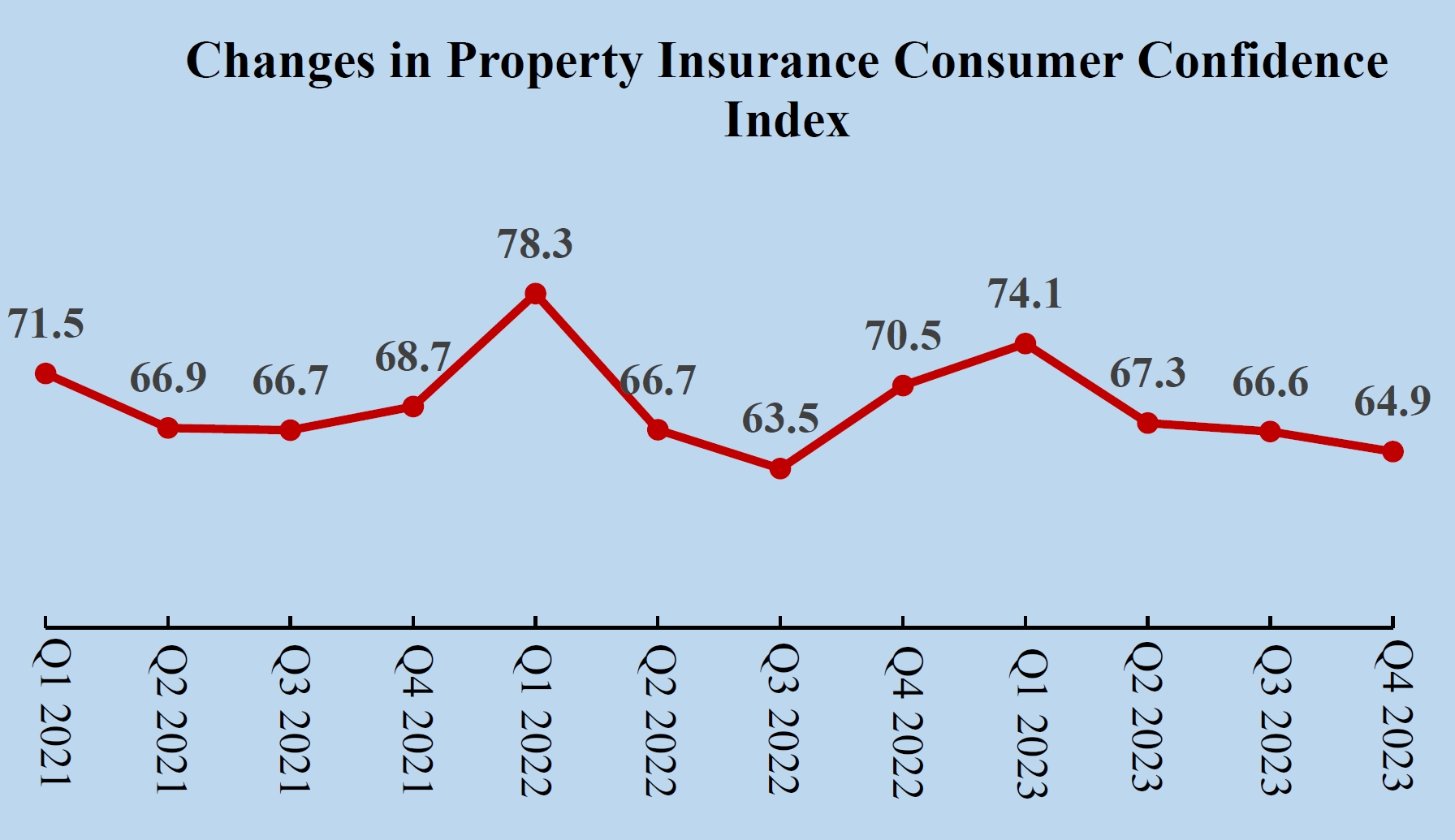
Figure 3 Changes in Property Insurance Consumer Confidence Index
In Q4 2023, the property insurance consumer confidence index was 64.9, down 1.7 over Q3 2023 and down 5.6 from Q4 2022, staying within the average confidence range. Its indicators showed the following trends: the three primary indicators and the six secondary indicators, which make up the index, all declined on a quarter-over-quarter basis. Of the three primary indicators, confidence in insurance industry dropped greatly compared with the previous quarter. Confidence in insurance industry stayed within the high confidence range, and confidence in macro-environment and confidence in individual spending both fell into the average confidence range. Of the six secondary indicators, perceived industry policies decreased considerably. Confidence in industry development, perceived industry policies, insurance service satisfaction, and consumer trust willingness stayed within the high confidence range, and confidence in economic environment and insurance spending willingness fell into the average confidence range.
Consumer confidence in property insurance was still recovering in Q4 2023. With the foundation of confidence recovery to be further consolidated, positive factors have emerged. For example, insurance spending willingness registered a smaller quarter-over-quarter decrease and exceeded the level of the same period in 2022. A Q4 survey showed that 70.0% of property insurance consumers surveyed were willing to purchase additional insurance in the next six months. To be specific, 52.1% of the respondents were willing to purchase additional account safety insurance (up 12.8 percentage points quarter on quarter), 47.6% were willing to purchase additional homeowner insurance (up 9.0 percentage points quarter on quarter), 34.7% were willing to purchase additional return freight insurance (up 12.3 percentage point quarter on quarter), and 20.6% were willing to purchase additional flight delay insurance (up 11.6 percentage point quarter on quarter). All of the four percentages reached their peak since Q4 2022, suggesting that there might be a significant change in the structure of consumer demand. Recent natural disasters such as cold temperatures, ice rain, and snow in many parts of China have caused great property losses, which gradually boosted consumers’ willingness to buy homeowner insurance. Additionally, in July 2023, the Ministry of Industry and Information Technology (MIIT) and the National Administration of Financial Regulation (NAFR) jointly issued the Opinions on Promoting the Well-regulated and Sound Development of Cybersecurity Insurance, to create a favorable environment for the orderly development of the cybersecurity insurance market. At the turn of the year, consumers become more enthusiastic about traveling and shopping. It is recommended that industry players pay close attention to the seasonal changes in consumer demand, continuously diversify and improve the lineup of property insurance products, and enhance the quality of insurance services, a prerequisite for meeting the diversified needs of the public for property insurance and promoting the high-quality development of the industry.
Overall, consumer confidence recovered throughout the year. Industry players are advised to implement the decisions and plans of the CPC Central Committee in depth, and closely track possible changes in insurance consumer confidence. Taking advantage of the favorable environment of festive spending, they will work to create a safe insurance consumption environment, satisfy consumers’ diverse needs for insurance products and services, continuously solidify the foundation of consumer confidence recovery, help boost insurance consumption confidence with multiple measures, and promote the insurance market toward sustained and positive development.
Annex: CICCI Scores for Q4 2023
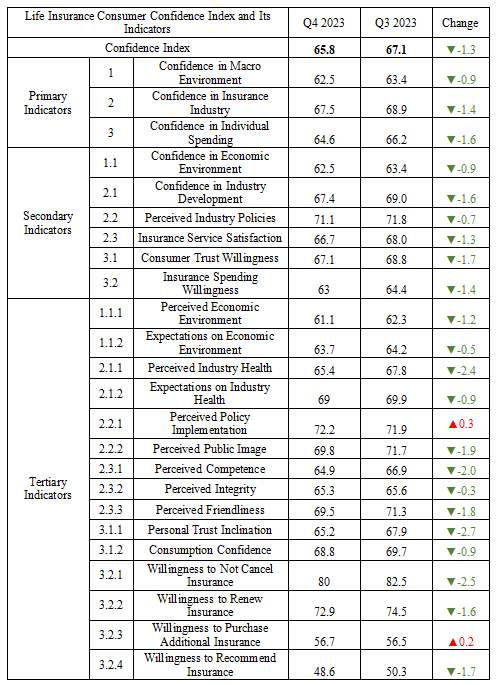
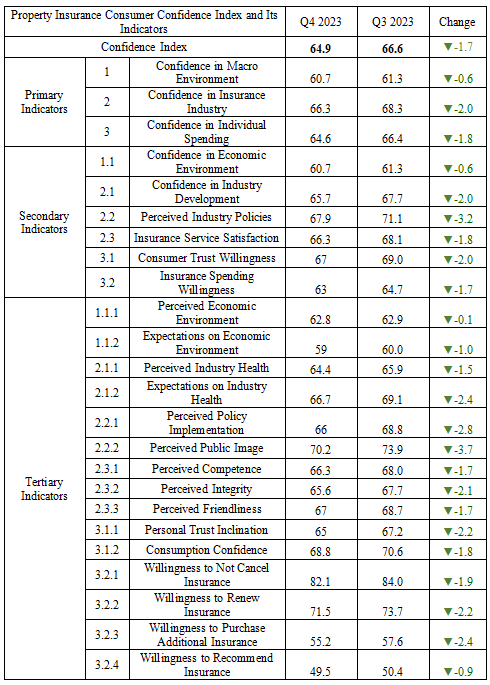
Notes on the Compilation of CICCI:
China Insurance Consumer Confidence Index (CICCI) survey covers 18 provinces, autonomous regions, and municipalities in Northeast, North, East, South, Central, Northwest, and Southwest China. These regions account for more than 90% of the national net premium written.
This round of survey uses a combination of two-phase stratified sampling, probability proportional to size (PPS) sampling, and random telephone sampling to collect 1,071 valid responses for inclusion in the index, comprising 531 from the life insurance segment and 540 from the property insurance segment. The online survey is completed with a big data-driven sampling frame and an AI-powered call system without human intervention. After a consumer answers the phone call and confirms his/her willingness to participate, the system will automatically send him/her a text message containing a link to the online survey form. This implementation ensures both consumer privacy and first-hand access to feedback.
CICCI gives a value from the [0, 100] range, 50 being the neutral result. A score higher than 50 indicates optimism, i.e. a larger proportion of insurance consumers is optimistic rather than pessimistic. The higher the score, the stronger the consumer confidence. Score ranges have the following meanings: (85, 100]: Very high confidence; (65, 85]: High confidence; (50, 65]: Average confidence; (35, 50]: Below-average confidence; (15, 35]: Low confidence; and (0, 15]: No confidence.

